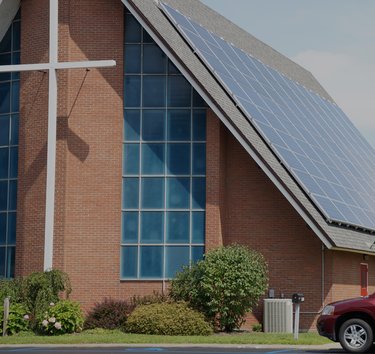Residential solar is good for wallet and environment
ALBANY COUNTY — Switching to home solar is expensive, but state and federal incentives make upfront costs more manageable, and local zoning ordinances that are relatively permissive make the long-term cost-savings from solar more accessible.
According to the green-energy advocacy group EnergySage, the average cost of a 6 kilowatt system — which is large enough to power a typical home — in New York, before incentives, is $34,154, or about $3 per watt. Unfortunately, the projected average savings over 20 years is less than that, at $30,658.
The good news is that state and federal tax credits bring the upfront cost down to about $19,000, for a net savings of more than $11,000 over 20 years.
The federal tax credit contributes 30 percent of the total cost of solar with no upper limit. The state tax credit contributes 25 percent, up to $5,000.
Once homeowners have calculated whether it is financially viable, they must navigate local zoning ordinances to determine whether they’re allowed to install residential solar and what requirements they’ll need to meet.
Guilderland and Altamont
In Guilderland, non-commercial solar energy systems are considered a major accessory structure, meaning that, if it’s ground-mounted, it must be located in a rear yard and comply with the same setback requirements as the principal structure. Rooftop systems must be flush with the roof, and may exceed the roofline by five feet for optimal capture. Systems appear to be eligible in all districts.
Altamont has few restrictions on residential solar, allowing it in almost all zoning districts except Resident Senior Citizen and Light Industrial. Solar in the Light Industrial District requires a special-use permit and site plan review from the Zoning Board of Appeals.
As accessory structures, solar panels are subject to a 15-foot height limitation in residential districts and a 20-foot height limitation in nonresidential districts, and must be at least five feet from the rear lot line, on top of the requirements set for principal structures on the lot.
New Scotland and Voorheesville
New Scotland allows small-scale solar in all districts, subject to a building permit, except on lots that are three acres or less, in which case a special-use permit is required. Roof-mounted systems must be flush and not extend past the roofline, while ground-mounted systems must be located in rear or side yards. Their height must not exceed 15 feet at maximum tilt.
The zoning also requires that solar panels be located in a manner that minimizes visual impact on surrounding properties. Screening is encouraged in general, but mandatory on lots less than three acres. Systems also may not generate more than 150 percent of the lot’s energy needs.
Only one ground-mounted system is allowed per lot.
Small-scale solar systems are also allowed in all districts of Voorheesville, requiring a solar building permit.
Roof-mounted systems must be parallel to the incline of slanted roofs, with no more than 18 feet between the highest edge of the system and the roof. For flat roofs, they shall not be more than two feet above the roof, unless there is a higher parapet that surrounds it, in which case the panels can’t extend beyond that.
Ground-mounted systems are subject to the setback requirements for the district they’re in, and must be located in side or rear yards, with screening encouraged. They cannot have a larger footprint than the principal structure.
Hilltowns
Knox allows small-scale solar arrays in all places except its two land-conservation districts. As an accessory use, arrays must be 12 feet from the principal building, and 10 feet from other accessory structures. In the residential districts, they must be placed in a backyard, and must be at least 40 feet from the lot lines and 10 feet from the principal structure.
Glare and anything else that may affect neighborhood character must be minimized.
Berne permits building-integrated and roof-mounted small-scale solar in all districts, but requires a site plan review by the planning board in the historic district for both. Ground-mounted systems are permitted in Residence/Agriculture/Forestry (RAF) and Medium Density Residence (MDF) districts, but require a special-use permit and site plan review in the remainder.
Roof-mounted systems must be three feet back from the roofline and run parallel to the roof.
Ground-mounted systems must be located in a side or rear yard in all districts, but may be located in the front yard of RAF lots if they get site plan approval.
They must be 100 feet from lot lines, and cannot exceed 15 feet. A site plan review may permit heights up to 20 feet, however. Systems cannot exceed 25 kilowatts without site plan approval.
Westerlo allows ground-mounted and rooftop solar in all districts with a building permit. Rooftop systems must be three feet from a chimney and cannot rest on overhangs, and cannot be more than 18 inches from the roof.
Ground-mounted systems must be at least 50 feet from lot lines, and have a maximum height of 12 feet, though can be higher if a special use permit is obtained. Systems cannot generate more than 110 percent of the lot’s needs.
Rensselaerville requires a special-use permit and site plan review for all types of small-scale solar energy systems, and does not allow them at all in the hamlet districts. However, systems that have less than 25 square feet of panels are exempt from all permitting and zoning requirements.
Ground-mounted systems must be 100 feet from lot lines, and no more than 15 feet high. Rooftop systems cannot be more than two feet off a slanted roof, and they must run parallel to the roof. They can be up to two feet off a flat roof.


